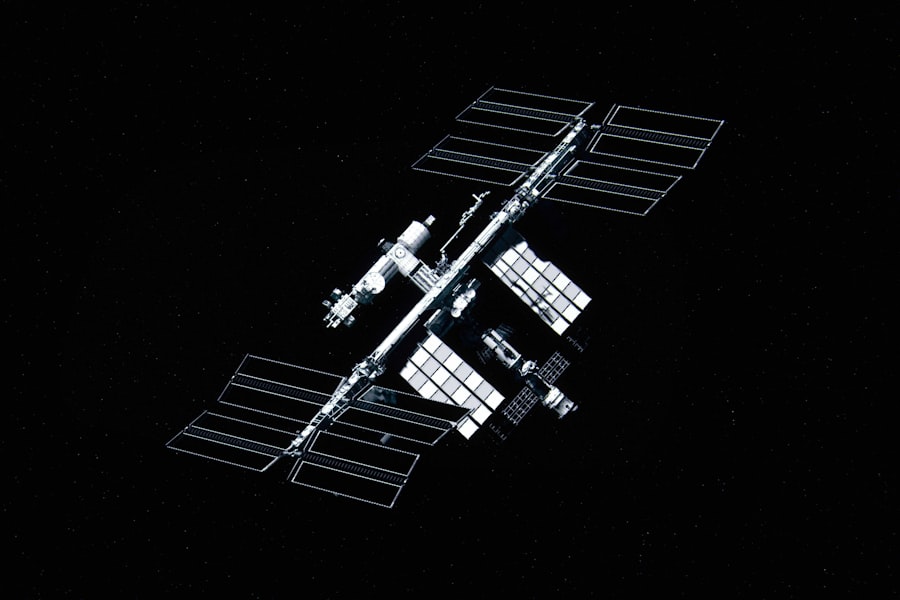In recent years, the proliferation of commercial satellites has transformed the landscape of global communications, navigation, and data collection. However, this rapid expansion has also attracted the attention of malicious actors seeking to exploit vulnerabilities in these systems. Cyber attacks on commercial satellites have become an increasingly pressing concern, as they can disrupt critical services and compromise sensitive information.
The rise of sophisticated hacking techniques and the growing number of state-sponsored cyber operations have heightened the urgency for robust cybersecurity measures in the satellite industry. The potential consequences of cyber attacks on commercial satellites are far-reaching. These attacks can lead to service interruptions, data breaches, and even the manipulation of satellite operations.
As more businesses and governments rely on satellite technology for essential functions, the stakes have never been higher. The increasing interconnectivity of satellite systems with terrestrial networks further complicates the security landscape, making it imperative for stakeholders to recognize and address the growing threat posed by cyber adversaries.
Key Takeaways
- Cyber attacks on commercial satellites are a growing threat that can have significant impacts on various industries and critical infrastructure.
- Vulnerabilities in commercial satellite systems can be exploited by cyber attackers to disrupt communications, navigation, and other essential services.
- Cyber attacks on commercial satellites have the potential to cause widespread disruption, financial losses, and compromise national security.
- Strategies for securing commercial satellites against cyber attacks include implementing encryption, secure communication protocols, and regular security audits.
- Collaboration and information sharing among satellite operators are essential for addressing the evolving cybersecurity threats to commercial satellites.
Vulnerabilities in Commercial Satellite Systems
Commercial satellite systems are inherently complex, comprising various components such as ground stations, satellite payloads, and user terminals. This complexity introduces multiple points of vulnerability that can be exploited by cybercriminals. For instance, many satellite systems rely on outdated software or hardware that may not have been designed with modern cybersecurity threats in mind.
These legacy systems can serve as easy targets for attackers looking to gain unauthorized access or disrupt operations. Moreover, the reliance on open communication protocols can expose satellite systems to interception and manipulation. Many commercial satellites utilize radio frequency (RF) signals that can be intercepted by anyone with the right equipment.
This lack of encryption in some communication channels creates opportunities for adversaries to eavesdrop on sensitive transmissions or even take control of satellite functions. As the industry continues to evolve, addressing these vulnerabilities will be crucial to safeguarding commercial satellite operations.
The Potential Impact of Cyber Attacks on Commercial Satellites

The ramifications of a successful cyber attack on a commercial satellite can be devastating. For instance, if an attacker were to gain control of a satellite’s operations, they could potentially alter its trajectory or disable its functionality altogether. Such actions could disrupt critical services like telecommunications, weather forecasting, and navigation systems, leading to significant economic losses and public safety concerns.
The cascading effects of these disruptions could impact various sectors, from transportation to emergency response services. Additionally, cyber attacks on commercial satellites can have national security implications. Many governments rely on satellite technology for intelligence gathering and military operations.
The potential for espionage and sabotage underscores the need for heightened vigilance and proactive measures to protect commercial satellites from cyber threats.
Strategies for Securing Commercial Satellites Against Cyber Attacks
| Strategies | Benefits |
|---|---|
| Encryption of communication | Protects data from interception |
| Implementation of strong authentication | Prevents unauthorized access |
| Regular security audits | Identifies vulnerabilities and weaknesses |
| Network segmentation | Minimizes the impact of a breach |
| Continuous monitoring and threat detection | Early detection of cyber attacks |
To mitigate the risks associated with cyber attacks on commercial satellites, stakeholders must adopt a multi-faceted approach to security. One effective strategy involves implementing robust access controls to limit who can interact with satellite systems. By ensuring that only authorized personnel have access to critical components, organizations can reduce the likelihood of insider threats and unauthorized access.
Another essential strategy is the regular updating and patching of software and hardware components. Cybercriminals often exploit known vulnerabilities in outdated systems, making it crucial for satellite operators to stay ahead of potential threats by maintaining up-to-date security measures. This proactive approach not only helps protect against existing vulnerabilities but also prepares organizations to respond effectively to emerging threats.
The Role of Encryption in Protecting Commercial Satellites
Encryption plays a vital role in securing communications between satellites and ground stations. By encoding data transmitted over RF signals, encryption makes it significantly more challenging for unauthorized parties to intercept and decipher sensitive information. Implementing strong encryption protocols can help safeguard against eavesdropping and data manipulation, ensuring that only authorized users can access critical communications.
Moreover, encryption can enhance the integrity of data transmitted between satellites and their operators. By employing cryptographic techniques such as digital signatures, organizations can verify the authenticity of messages and ensure that they have not been tampered with during transmission. This added layer of security is essential for maintaining trust in satellite communications and protecting against potential cyber threats.
Implementing Secure Communication Protocols for Commercial Satellites

In addition to encryption, establishing secure communication protocols is crucial for protecting commercial satellites from cyber attacks. These protocols should encompass various aspects of communication, including authentication, data integrity, and confidentiality. By implementing industry-standard protocols such as Transport Layer Security (TLS) or Internet Protocol Security (IPsec), organizations can create a secure framework for transmitting data between satellites and ground stations.
Furthermore, adopting a layered security approach can enhance the resilience of communication systems against cyber threats. This involves integrating multiple security measures at different levels of the communication process, such as using firewalls, intrusion detection systems, and secure access controls. By creating a comprehensive security architecture, organizations can better defend against potential attacks and minimize the risk of unauthorized access to satellite systems.
The Importance of Regular Security Audits for Commercial Satellites
Conducting regular security audits is essential for identifying vulnerabilities within commercial satellite systems and ensuring compliance with industry standards. These audits involve a thorough assessment of security policies, procedures, and technical controls to evaluate their effectiveness in mitigating cyber risks. By identifying weaknesses in their security posture, organizations can take proactive steps to address potential vulnerabilities before they are exploited by malicious actors.
Moreover, security audits provide an opportunity for organizations to stay informed about emerging threats and best practices in cybersecurity. As the landscape of cyber threats continues to evolve, regular audits enable satellite operators to adapt their security strategies accordingly. This ongoing evaluation process is vital for maintaining a robust defense against cyber attacks and ensuring the continued integrity of commercial satellite operations.
Training Satellite Operators to Recognize and Respond to Cyber Threats
Human factors play a significant role in cybersecurity, making it essential for satellite operators to receive comprehensive training on recognizing and responding to cyber threats. This training should encompass various aspects of cybersecurity awareness, including identifying phishing attempts, understanding social engineering tactics, and recognizing suspicious activities within satellite systems. By equipping operators with the knowledge and skills needed to detect potential threats, organizations can significantly reduce the risk of successful cyber attacks.
In addition to awareness training, organizations should also conduct regular drills and simulations to prepare operators for real-world cyber incidents. These exercises can help reinforce best practices for incident response and ensure that operators are familiar with established protocols for addressing security breaches. By fostering a culture of cybersecurity awareness among satellite operators, organizations can enhance their overall resilience against cyber threats.
Collaboration and Information Sharing Among Satellite Operators
Collaboration among satellite operators is crucial for enhancing cybersecurity across the industry. By sharing information about emerging threats, vulnerabilities, and best practices, organizations can collectively strengthen their defenses against cyber attacks. Establishing partnerships with other stakeholders in the space sector can facilitate knowledge exchange and promote a unified approach to addressing cybersecurity challenges.
Moreover, participating in industry forums and working groups can provide valuable insights into current trends in cybersecurity and emerging technologies. These collaborative efforts can lead to the development of standardized security protocols and practices that benefit all stakeholders involved in commercial satellite operations. By fostering a spirit of cooperation within the industry, organizations can create a more secure environment for satellite operations.
The Regulatory Landscape for Securing Commercial Satellites
The regulatory landscape surrounding commercial satellites is evolving as governments recognize the importance of cybersecurity in this critical sector. Various regulatory bodies are beginning to establish guidelines and standards aimed at enhancing the security of satellite systems against cyber threats. Compliance with these regulations is essential for organizations operating in this space, as failure to adhere to established standards can result in significant penalties and reputational damage.
Additionally, regulatory frameworks often encourage collaboration among stakeholders by promoting information sharing and best practices within the industry. As regulations continue to develop, organizations must stay informed about changes in compliance requirements and adapt their security strategies accordingly. By proactively engaging with regulatory bodies and participating in discussions about cybersecurity standards, organizations can contribute to shaping a more secure future for commercial satellites.
The Future of Cybersecurity for Commercial Satellites
As technology continues to advance at an unprecedented pace, the future of cybersecurity for commercial satellites will likely involve increasingly sophisticated measures to combat emerging threats. Innovations such as artificial intelligence (AI) and machine learning (ML) are expected to play a significant role in enhancing threat detection and response capabilities within satellite systems. By leveraging these technologies, organizations can analyze vast amounts of data in real-time to identify anomalies indicative of potential cyber attacks.
Furthermore, as the demand for satellite services grows globally, so too will the need for robust cybersecurity measures that protect against evolving threats. The integration of advanced technologies will be essential for maintaining the integrity of commercial satellite operations while ensuring compliance with regulatory requirements. Ultimately, a proactive approach that emphasizes collaboration, continuous improvement, and innovation will be key to securing commercial satellites against the ever-present threat of cyber attacks in the future.
In the rapidly evolving landscape of space technology, the protection of commercial satellites from cyber attacks has become a critical concern. As these satellites play a pivotal role in global communications, navigation, and data collection, ensuring their security is paramount. A related article that delves into strategies for safeguarding these vital assets can be found on Real Lore and Order. This article provides insights into the latest cybersecurity measures and technologies being implemented to shield satellites from potential threats. For more detailed information, you can read the full article by visiting this link.
WATCH THIS! 🚀 Why The Moon Is The Next Battlefield: The Geopolitics of Cislunar Space
FAQs
What are commercial satellites?
Commercial satellites are satellites that are owned and operated by private companies for various purposes such as telecommunications, broadcasting, navigation, and remote sensing.
What is a cyber attack on a satellite?
A cyber attack on a satellite involves unauthorized access to its systems or data, with the intent to disrupt its operations, steal sensitive information, or cause damage to the satellite.
Why is it important to protect commercial satellites from cyber attacks?
Commercial satellites play a critical role in various industries and are essential for global communication, navigation, and observation. A successful cyber attack on a satellite could have widespread and severe consequences, including disruptions to essential services and potential financial losses.
What are the potential risks of cyber attacks on commercial satellites?
The potential risks of cyber attacks on commercial satellites include loss of control over the satellite, interference with its communication signals, theft of sensitive data, and physical damage to the satellite’s hardware.
How can commercial satellites be protected from cyber attacks?
Commercial satellites can be protected from cyber attacks through various measures such as encryption of communication signals, regular software updates to patch vulnerabilities, implementation of access controls, and continuous monitoring for suspicious activities.
What are some examples of past cyber attacks on commercial satellites?
There have been reported incidents of cyber attacks on commercial satellites, including unauthorized access to satellite communication networks and attempts to interfere with satellite operations. However, specific details of these incidents are often not publicly disclosed due to security concerns.
